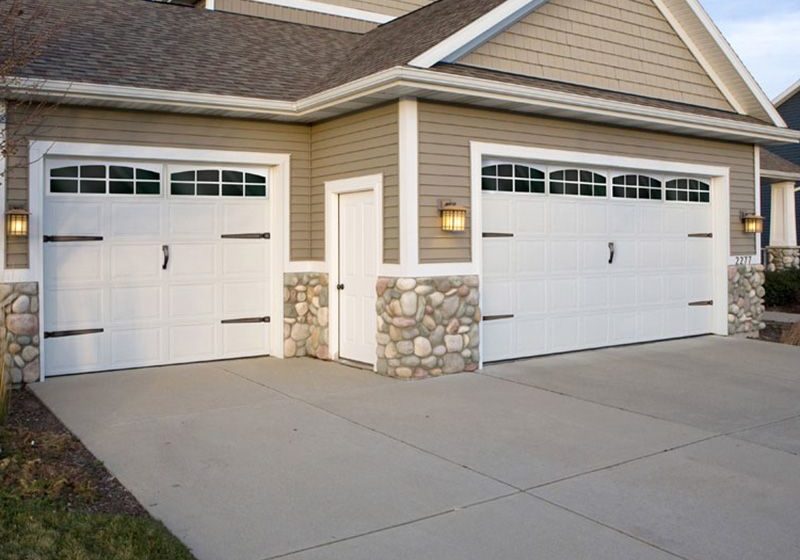A garage door improves the appearance of a house and adds to its convenience and security. However, its installation is a rather challenging task as it requires the availability of the right tools and equipment, knowledge, and experience. That’s why it’s always better to entrust the job to garage door professionals who know how to use the tools and can guarantee the successful completion of the project. They will do it all in no time while you can rest assured your garage door will serve long.
Nevertheless, if you are adept at DIY tasks and consider fulfilling the door installation yourself, you will benefit from this step-by-step guide.
Unlocking the Old Door
Before starting the project, you must remove the old door. If the latter has a standard torsion-spring mechanism, don’t try to adjust or remove it yourself. Being under extreme tension, such doors are hazardous. You’d better call a professional instead.
Anyway, the process of unlocking the door, just in case you decide to do it yourself, starts with releasing the tension in the torsion spring. If you don’t do it in this phase, the garage door will spring back and cause injuries to anyone around. So, the safest way to start is to clamp pliers to the torsion spring shaft and wedge them against the header wall above the door. Now, insert a steel rod into the spring winding cone through one of the two holes. Loosen the screws while holding the tension in the spring, then unfasten the spring with the steel rods, 1/4 at a time. Perform all these steps slowly till you loosen both springs.
Gathering the Necessary Tools and Equipment

(Image by ededchechine on Freepik)
Before starting the installation of a garage door, gather all the necessary stuff. See the full list of tools you will need for the project:
- A hammer;
- A measuring tape;
- A level;
- A screwdriver;
- Nails and screws;
- Sawhorses;
- A wrench;
- A door opener for automating it.
Types of Garage Door Mechanism
Understanding the operating mechanism of your garage door is crucial. Generally, all garage doors function through a counterbalance system. The latter balances the garage door weight. The two basic types of garage door systems are as follows:
- Torsion Spring System: This is perhaps the most common type. Doors operating with this system have cables at the bottom corners, while the torsion springs are above the opening. When closing the door, those springs store energy by winding up. When you open the door, the energy releases and helps you lift the door.
- Extension Spring System: The cables of an extension spring system are at the bottom of the door, although the overall functioning is much like that of a torsion-spring system. When you close the door, its springs stretch and store energy that gets released to raise the door upon opening.
Garage Door Installation

(Image by ededchechine on Freepik)
Now that you understand the principle of a garage door function and have the necessary equipment ready see how the DIY installation process is carried out:
- Start with installing the tracks. They must be attached to the ceiling of the garage with brackets. The tracks must be aligned (use a level for this) and installed parallel.
- Now, pass to set the garage door springs, the essential door opening system parts. They stand for raising the garage door and lowering the strain on the opener. You can follow the manufacturer’s instructions depending on the door operating mechanism’s springs.
- Once you have finished with the springs, set the garage door panels. They must be attached to the tracks with hinges. Begin with fixing the bottom panel to the tracks and then pass to attaching the subsequent panels. Check so that every panel is level and firmly attached.
- An automated door opener will make it less tiresome to open/close the garage door. However, its installation is optional and depends on your budget. Depending on the manufacturer, you may deal with different instructions. Carefully follow them to accurately install the opener motor, rail, and trolley. After firmly installing the opener, test it to see if it works correctly.
- Your garage door is already installed and needs some testing. Open and close it several times to check if it’s working correctly. If any adjustments are to be made, apply them to ensure smooth operation.
- The final step of the DIY garage door installation process is securing the door. You are to attach weatherstripping to the bottom of the door, thus sealing it to the ground and preventing drafts. Also, you should use a locking mechanism on your garage door so that it stays secure against forced entry.
Wrapping Up
Garage door installation is, hands down, a challenging task. However, it’s not impossible to complete it yourself. Suppose you have the necessary toolkit and consider yourself handy. In that case, you will soon have your new garage door successfully installed by following the above-introduced guide and the manufacturer’s instructions on the door, automated opener, and lock mechanisms.






